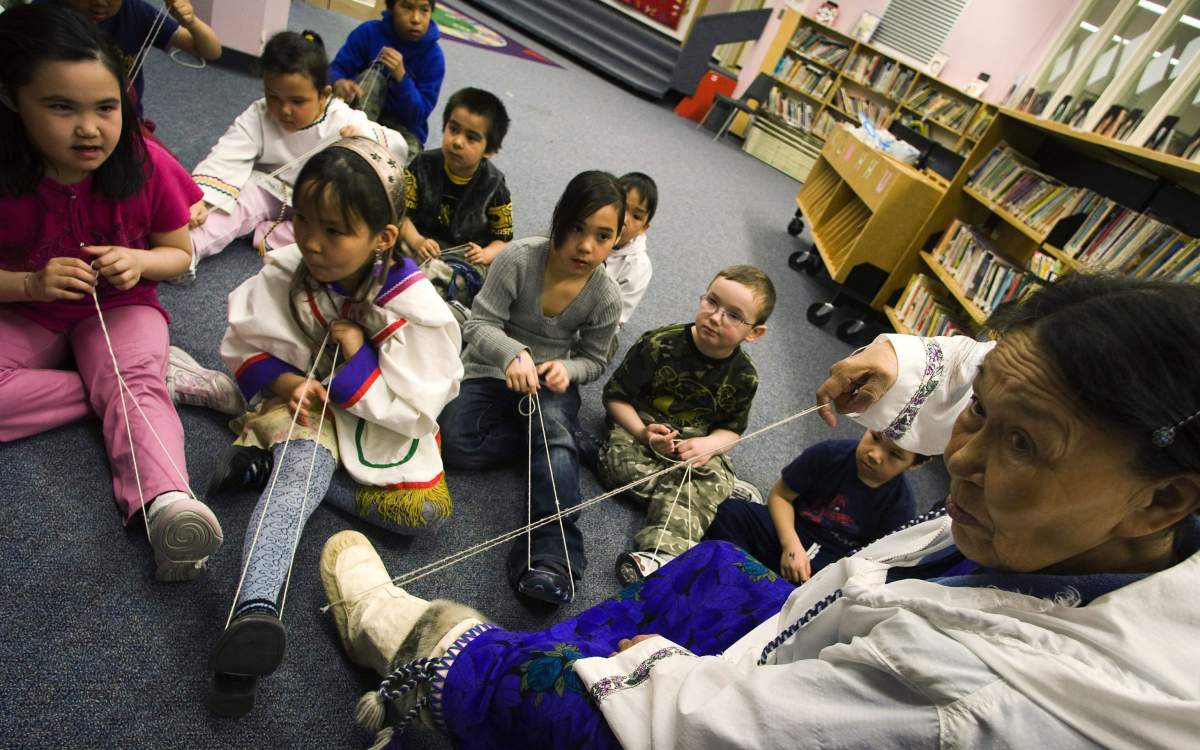Three indigenous languages still spoken in Canada are among a group being studied as researchers attempt to understand how children around the world learn their vastly different mother tongues.

The global project – spearheaded by the University of Zurich – is looking at Dene, East Cree, and Inuktitut among 10 languages.
Researchers already know that children have little problem learning to speak their native language. What’s not well understood is exactly how this happens.
“We’re trying to get a real sense of how children can acquire or learn any language in the world,” Dagmar Jung, a senior researcher from the University of Zurich, said in an interview. “It’s a miracle that any child can actually learn any language it’s exposed to when it’s young.”
As part of the study, Jung and Olga Lovick, an associate linguistics professor at the First Nations University of Canada, were heading to the Clearwater River Dene Nation in northern Saskatchewan on Sunday.
It’s one of only three places in the world where children grow up speaking Dene.

Get breaking National news
About 7,000 languages are spoken around the world but most research to date has focused on the structurally similar large European languages.
“The question is how do kids go about learning a language that is structurally so different as Dene?” Jung said from Regina.
Jung, who plans an initial two-month stay with the Clearwater River Dene, and Lovick plan to train community members to record children of two or three years old and to write down what they say over the next year.
Lovick will help co-ordinate the research, which will involve Dene language experts, research and recording assistants, as well as participating families.
At one point, Canada was home to more than 70 distinct First Nations languages. Recent figures suggest about a dozen have disappeared altogether and the others – with few exceptions – are extremely endangered.
“By our being there and fostering this interest in children learning the language, we’re hoping that maybe this will remind people how important it is to speak Dene to their kids so that they keep learning Dene,” Lovick said. “In many other places it’s too late.”
One aim of the research is to identify ways to teach First Nations languages more effectively to adults.
“We know how hard they are to learn as adults,” Jung said. “So everybody is actually really excited to see finally how children do it because we just don’t know how to do it easily.”
One idea – currently being challenged – is that children’s brains have a “hard-wired” grammar module called Universal Grammar from which all human languages can be derived.
Another idea is that learning a language relies on general cognitive mechanisms.
Much of the initial research on Inuktitut and East Cree is already underway or been done.
The other languages in the study are Turkish, Japanese, Russian, Sesotho, which is spoken in southern Africa, Yucatec Maya in Mexico, Chintang in Nepal, and Indonesian.
- Canadian woman charged with illegally crossing into U.S., kicking border agent’s face
- A new ‘cold’ war? Canada looks to bolster Arctic security, sovereignty
- Canadian furniture industry still ‘reeling’ after Trump pauses tariff spike
- Ottawa propose fines of up to $1M for violating foreign influence registry rules







Comments